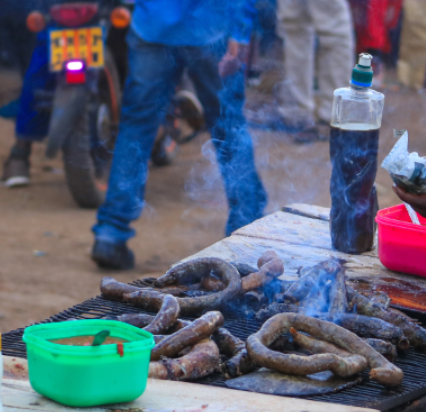
Nairobi county will issue a food safety manual to improve hygiene and food handling among street food vendors.
The manual provides clear guidance on safe and hygienic handling of raw and cooked foods. It is designed primarily for public health officers to educate and support street vendors in adopting safer food practices.
It was developed by the University of Nairobi and the African Population and Health Research Centre (APHRC).
Food safety is not a luxury but a basic constitutional right and an essential part of the right to adequate food, health safety specialists say.
“Food safety is often overlooked in food security conversations, yet it is crucial to human health, dignity, and overall well-being,” they said in a statement.
Street food, or ready-to-eat meals prepared and sold in public spaces, plays a major role in urban diets, especially in low- and middle-income countries where it is often the most affordable and accessible option.
Food safety, however, is a significant public health concern.
“The biggest issue is hygiene,” the manual reads. “Poor handling practices can lead to contamination, while other challenges include poor sanitation, congestion, pedestrian obstruction, and even illegal occupation of public spaces.”
Food contamination can occur at any point along the food chain, from production to consumption, hence, the need for proper handling education and prevention strategies.
The Food Safety Training Manual for Street Food Vendors gives practical information on the causes and symptoms of foodborne illnesses, common food contaminants, best hygiene practices in food handling, storage and preparation, as well as proper methods for food preservation.
The manual is drawn from both local and international legal frameworks, including Kenya’s Public Health Act (Cap. 242) and the Food, Drugs, and Chemical Substances Act (Cap. 254).
Kenya has had a National Food Safety Policy since 2013, although it has not yet been passed into law.
Agriculture Principal Secretary Paul Kiprono said the policy is meant to establish a coordinated national food safety system and a central food safety authority.
“An effective system will reduce illnesses and deaths from unsafe food, while also boosting trade,” he said.
Unsafe food has widespread health consequences. The World Health Organization estimates that 600 million people worldwide fall ill from foodborne diseases each year, leading to 420,000 deaths and the loss of 33 million healthy life years (DALYs or Disability-Adjusted Life Years).
In Africa, unsafe food causes about 91 million cases of illness annually, with 137,000 deaths.
In Kenya, more than 70 per cent of all diarrhea cases are linked to contaminated food and water, according to the Ministry of Health’s 2020 data.
Public Health Principal Secretary Mary Muthoni said unsafe food creates a vicious cycle of disease and malnutrition. It strains healthcare systems and harms the economy, tourism and trade.
“It also reduces nutrient absorption, which severely affects vulnerable groups like infants, pregnant women, the elderly, and those with compromised immunity,” she said.
Muthoni said Kenya faces multiple food safety risks, including contamination of cereals, legumes, milk and dairy products. There can be pesticide residue in fruits and vegetables, and drug residue in animal-based foods, which contributes to antimicrobial resistance.
Other food safety challenges include food adulteration, such as the use of hydrogen peroxide and formalin in milk to fake the protein level and harmful additives like trans fats, which are linked to heart disease and Type II diabetes.
Experts said the safety manual is a critical step toward addressing these issues and giving street food vendors the knowledge necessary to serve safe and nutritious food to millions of Kenyans.




![[PHOTOS] Gachagua warm reception in Nyandarua](/_next/image?url=https%3A%2F%2Fcdn.radioafrica.digital%2Fimage%2F2025%2F04%2Fc2a8c64d-5577-4768-a0ac-513c8876c288.jpeg&w=3840&q=100)





